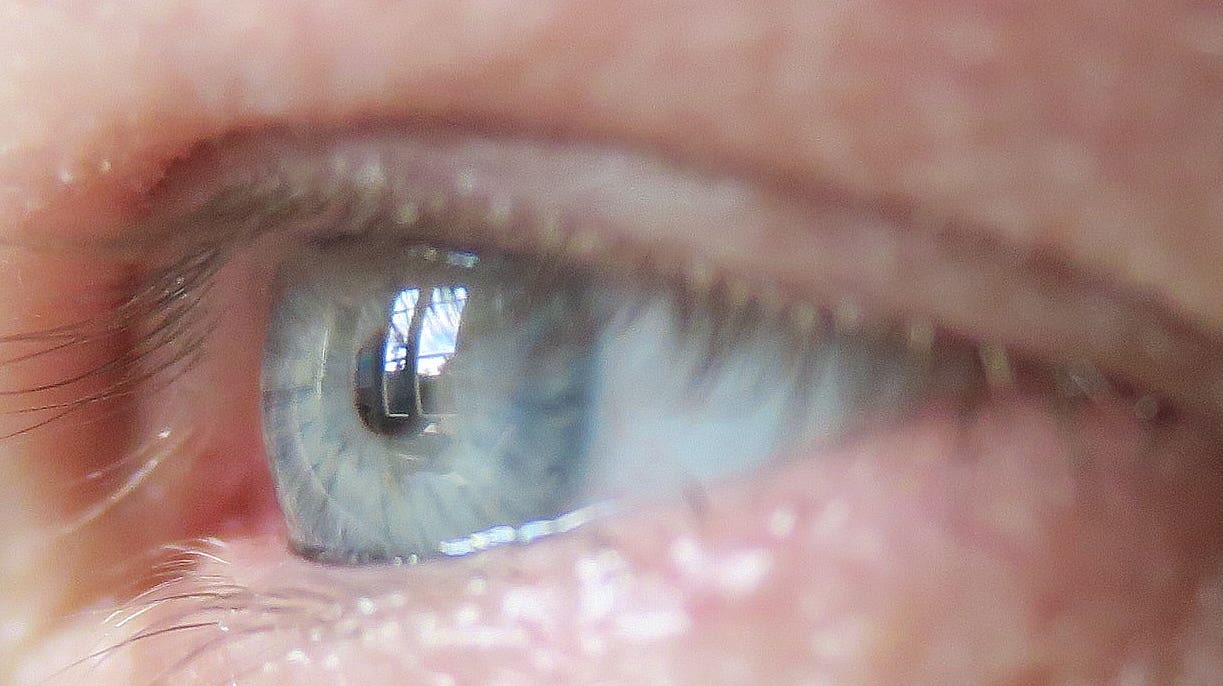Groundbreaking eye implants can be used to treat diabetes and other diseases
Researchers have developed a tiny device designed for implantation into the eye to treat diseases like diabetes

A new breakthrough in medical technology has emerged from Sweden, where researchers have developed a tiny device designed for implantation into the eye. This innovation opens up fresh avenues for treating diseases like diabetes through cell-based therapies.
Crafted by a team from KTH Royal Institute of Technology and Karolinska Institutet, this microscale device, detailed in the journal Advanced Materials, aims to encapsulate insulin-producing pancreatic cells alongside electronic sensors.
The collaboration between these two prestigious institutions has led to the creation of a device capable of precisely positioning micro-organs, particularly pancreatic islets or islets of Langerhans, within the eye without the need for sutures. This breakthrough offers promising prospects for cell-based therapies, including the treatment of both Type 1 and Type 2 diabetes, utilizing the eye as a natural platform.
Anna Herland, a senior lecturer involved in the project, explains the choice of the eye as an ideal location for this technology. She notes that the eye lacks immune cells that might react negatively during the initial stages of implantation. Additionally, its transparent nature enables researchers to visually and microscopically monitor the implant's progress over time.
"The eye is our only window into the body, and it’s immune-privileged," says Herland, emphasizing the advantageous properties of the eye for such medical interventions.
The device itself is ingeniously designed as a wedge, measuring about 240 micrometers in length. This design allows for mechanical fixation at the angle between the iris and the cornea within the anterior chamber of the eye (ACE). Notably, this work marks the first instance of mechanically fixing a device in the anterior chamber of the eye.
Related Stories
Wouter van der Wijngaart, a professor involved in the project, elaborates on the device's functionality. "We designed the medical device to hold living mini-organs in a micro-cage and introduced the use of a flap door technique to avoid the need for additional fixation," he explains.
Tests conducted on mice have demonstrated the device's ability to maintain its position within the living organism for several months. Furthermore, the mini-organs encapsulated by the device quickly integrated with the host animal's blood vessels, functioning normally throughout the testing period.
Per-Olof Berggren, another key contributor to the research, brings years of experience in transplanting islets of Langerhans into the anterior chamber of the eye in mice. He emphasizes the uniqueness of the current device and its potential for further advancement.
"The current unit is unique and will, among other things, form the basis for our continued work to develop an integrated microsystem for studying the function and survival of the islets of Langerhans in the anterior chamber of the eye," says Berggren.
He also underscores the translational significance of this research, particularly in the context of ongoing clinical trials involving the transplantation of Langerhans islands to the anterior chamber of the human eye for diabetes treatment.
Anna Herland highlights how this technological advancement addresses a significant obstacle in the development of cell therapies, particularly for diabetes. By eliminating the need for invasive methods to monitor graft function and guide care, the device paves the way for long-term transplant success.
"Our work represents a first step towards advanced medical microdevices capable of both localizing and monitoring the function of cell grafts," she states.
The design of the device not only facilitates the precise positioning of mini-organs but also ensures an adequate supply of nutrients to the encapsulated cells. Herland envisions future iterations of the technology integrating more advanced functionalities such as integrated electronics or drug release mechanisms.
Funding for this groundbreaking research has been provided by several organizations including SSF, Knut and Alice Wallenberg Foundation, ERC, Erling Persson Family Foundation, Jochnick Foundation, AIMES, and Novo Nordisk Foundation.
In adherence to transparency standards, the study's conflict of interest statement reveals that Per-Olof Berggren has a partnership with Biocrine AB, a company involved in the study.
For more science news stories check out our New Innovations section at The Brighter Side of News.
Note: Materials provided above by The Brighter Side of News. Content may be edited for style and length.
Like these kind of feel good stories? Get the Brighter Side of News' newsletter.
Joseph Shavit
Head Science News Writer | Communicating Innovation & Discovery
Based in Los Angeles, Joseph Shavit is an accomplished science journalist, head science news writer and co-founder at The Brighter Side of News, where he translates cutting-edge discoveries into compelling stories for a broad audience. With a strong background spanning science, business, product management, media leadership, and entrepreneurship, Joseph brings a unique perspective to science communication. His expertise allows him to uncover the intersection of technological advancements and market potential, shedding light on how groundbreaking research evolves into transformative products and industries.



